Did you know that Buick once made a two-seater? With pop-up headlights, even – just like a Corvette?
It’s not well-known, probably because Buick only made it for not-quite three years, from January of 1988 through the spring of 1991 – making it one of the shortest-lived and so least remembered cars GM ever made.
But that doesn’t make it a forgettable car.
Arguably, it was a beautiful car.
But it was a poorly timed and probably too-small car.
The Reatta was one of those oddballs that got through the pipeline only to find no one there. Or rather, too many others already there. Today – the 2020s – coupes are pretty uncommon. But in the mid-1980s, they were common.
Especially at GM.
Chevy had the Corvette and Pontiac the Fiero, which made its debut in 1984. Cadillac had the Allante, which arrived two years later.
Buick – which was looking for a way to shave its buyer demographic by about 30 years, from people in their 70s to people in their 40s – wanted some of that action.
But how to get it?
Enter the Reatta – named to suggest yachting rather than rest homes. 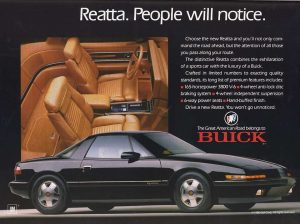
It would be small, low and sleek, with just two seats – like the Fiero – but without the commuter car taint or the engine behind its seats. It would be front-wheel-drive, like the Allante – but not as flashy or as costly.
It would tout style and sophistication, manifested in the graceful, unadorned bodywork penned by GM’s Advanced Design Studio 2 and (initially) an all digital dashboard, including one of the very first LCD touchscreens installed in the center stack of an American or any other production car.
This was called the Electronic Control Center (ECC) and among things, the driver could use it to visually access and scroll through diagnostic information about the drivetrain and other vehicle operating parameters, as well as operate the car’s climate control system and stereo – something common in 2020s cars but extremely uncommon in mid-late 1980s cars, some of which still had carburetors.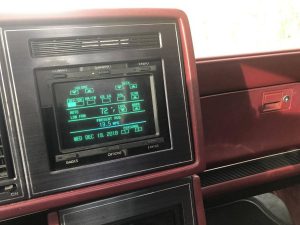
Keyless entry – another unusual feature during the late Reagan Era – was available and four wheel disc brakes were standard, with wheel-lock during panic braking eliminated by ABS – which was then a very new technology and available in only about 10 percent of new cars.
The Reatta was also one of the first GM cars to integrate previously separate controls for things like the power windows with the rest of the car’s systems through Body Control Modules (common today).
Under the hood, a transversely mounted version of Buick’s 3.8 liter overhead valve V6, styled the “3800.” This was essentially the same engine that Buick was using to power the rear wheels in its other hoped-for demographic changer, the Regal Grand National. Which came in black only and evoked funerals . . . for any who dared to challenge one to a drag race.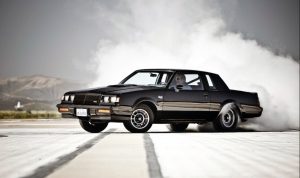
In the Reatta, the 3.8 V6 served as a mid-way point between the Fiero’s smaller (and optional) 2.8 liter V6 and the larger – and more expensive – V8 that powered the Allante. It was paired with an electronically controlled four-speed automatic.
To ensure ride quality on par with European personal luxury coupes, the Reatta had a fully independent suspension, unlike the Grand National – which still used a solid rear axle.
The car itself was built on a shortened version of GM’s E-Body platform, which dated back to the ‘60s and was used over the years as the basis for both rear-drive and front-drive vehicles, most notably for personal luxury coupes like the 1966 Oldsmobile Toronado (later) the Cadillac Eldorado. In 1979, the E-Body platform was downsized to fit the times and this revised version – now entirely for FWD cars – became the starting point for what became the Reatta.
But it wasn’t an easy fit – as the downsized E-Body chassis was angular – in keeping with the boxy shapes then popular – while the Reatta penned by the GM Design Studio was gently curvaceous. The then-head of the Design Studio, David North, said: “We had a cartoon in the studio that illustrated our dilemma . . . it showed a (top view) plan of ths rectangular chassis with this almost circular car on it… there were four corners where the frame stuck out” beyond the body. “They couldn’t modify the chassis and and it wouldn’t fit under the body. Everyone said it’s never going to work.”
The answer came – via Germany.
And the Porsche 911 – from which the Reatta team cribbed some design cues, including the wide-panel single taillight and some pleats to straighten the curves a bit. In the end, it all fit – and the project got green-lit by upper management.
A dedicated assembly line – the Reatta Craft Centre – spelled Euro-style to summon the wanted aura – was created in Lansing, Michigan, where the cars would be partially hand-built by workers specially trained for the task in a series of successive staging areas, with the paintwork handled by PPG Industries, also on a dedicated line. GM wanted the Reatta to rise to a new level of craftsmanship and for the car to arrive at dealers without orange peel or other still-common at this time paint defects.
Electronic defects were another matter.
The EEC was very buggy – which should have been expected given the state of touchscreen tech back in ’88, when kids were playing dot-dash “football” on the school bus.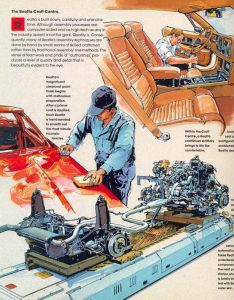
The Reatta’s screen would sometimes go dark – and when it did, you no longer had control over the climate – or other touchscreen-only functions, such as the stereo. GM fixed the problem by returning to physical knobs and buttons for the climate control and stereo in the Reatta’s third year of production (1990) which, as it turned out, would be the Reatta’s second to last year of production.
Buick had hoped the Reatta would sell about 20,000 copies annually when the project was green-lighted in the summer of 1986 and the first pilot car assembled. But the production car only made it about halfway there – in 1990, the first year without the touchscreen and the first year for a convertible, the introduction of which was delayed by additional teething troubles, this time having to do with getting the convertible to not leak.
The top – cloth or vinyl – was manually lowered and closed and had a glass rather than plastic rear window, with an embedded electric defroster grid.
Just 2,132 convertible Reattas were made in ’91 – in addition to 6,383 hardtop coupes – pushing the total production run that year to 8,515 cars. This was well shy of the return Buick had in mind back in ’86 at the project’s genesis – and far short of what GM corporate was willing to float.
Like the Allante, the Reatta was a very expensive car to make and while it did share its drivetrain – the 3.8 V6 – with other Buick (and GM) models, which helped to tamp down production costs, its model-specific bodywork, trim and many other parts made it hard to make a profit selling the ensemble unless it sold in sufficient volume.
Which it never did.
But not because it was a two-seater or even because of the early issues with the EEC. The Reatta’s real problem was probably its size. Buick sold plenty of Rivieras back in the day; and it had no troubles selling the Regal Grand National in the same day. What did these cars have that the Reatta lacked?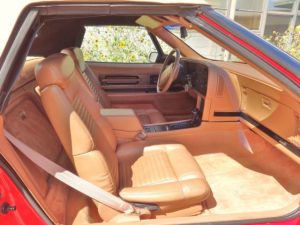
The thing people who buy Buicks expect.
Room.
Which is really another way of saying comfort.
The Grand National – which was built and sold very well during the same time period that the Buick tried to sell the Reatta – was crude and even clunky in comparison. It was based on an aging rear-drive platform (also used to build the Chevrolet Monte Carlo and the Pontiac Grand Prix) with a primitive suspension, plasticky dashboard, analog gauges and none of the high-tech features that abounded inside the Reatta.
But it had size – which provides room. 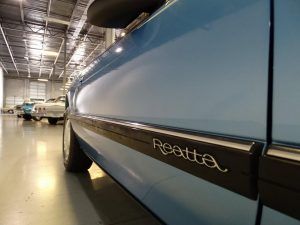
Models like the Riviera and Regal were mid-sized or even full-sized cars while the Reatta was a compact, a type of car that didn’t jibe with the Buick ethos. It wasn’t that it was cramped for the driver or the front seat passenger, but it did look small – because it was.
Just 183.7 inches long and riding on a 98.5 inch wheelbase. For reference, the same-era Regal Grand National coupe was 200.6 inches long and rode on a 108-inch wheelbase. It may not have been as stylish as the Reatta but it had more presence.
The Reatta would probably have done better if it had been sold under a different label – one with a history of personally sized personal luxury cars – BMW, for instance. Or Mercedes.Both of which have done just that and successfully. But the same thing marketed by Buick just didn’t click. Unlike the Fiero – which actually sold very successfully until its numerous design flaws became common knowledge – the Reatta sold poorly from the get-go.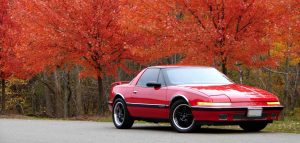
First-year production amounted to just 4,708 cars – which makes the Pontiac Aztek seem like a winner (11,201 were sold its first year). The Reatta’s second year was better – 7,009 found buyers – but this still not even 50 percent of GM’s target number and GM was not in tolerant mode by this time because of the Fiero Fiasco and the money-hemorhagging Allante project (GM was airmailing partially completed Allantes to Italy for completion, then airmailing them back to the states; more about that mess here.)
1991 – the Reatta’s last year – was actually just five months. And that just barely. The last two-seater Buick left the Reatta Craft Centre – renamed the Lansing Craft Center after the funeral – on May 10, 1990.
Total production was 1,519 cars, 305 of them convertibles.
. . .
Buick Reatta Trivia:
-
- The Reatta didn’t have back seats but it did have backseat storage cubbies, integrated with the trunk – expanding usable cargo-carrying capacity significantly for a car it size.
- While the Reatta wasn’t very powerful or very quick – the 3.8 V6 never exceeded 170 horsepower in factory-built trim – it wasn’t slow. In part because it was light – about 3,400 lbs. for the coupe. Top speed was close to 130 MPH.
- 1990 and ’91 models came with a personal touch – in the glovebox. The folio containing the owner’s manual and warranty paperwork was signed by the supervisor on duty at the Reatta Assembly Centre when their particular car came off the line.
- Probably the rarest iteration of the Reatta was the 1990 Select Sixty convertible; these cars featured all white exteriors with unique red-trimmed interiors (with white leather bucket seats), 16-inch wheels and special Select Sixty emblems.
Excerpted from the forthcoming (eventually) book, Doomed.
. . .
Got a question about cars, Libertarian politics – or anything else? Click on the “ask Eric” link and send ’em in!
If you like what you’ve found here please consider supporting EPautos.
We depend on you to keep the wheels turning!
Our donate button is here.
If you prefer not to use PayPal, our mailing address is:
EPautos
721 Hummingbird Lane SE
Copper Hill, VA 24079
PS: Get an EPautos magnet or sticker or coaster in return for a $20 or more one-time donation or a $10 or more monthly recurring donation. (Please be sure to tell us you want a magnet or sticker or coaster – and also, provide an address, so we know where to mail the thing!)
My latest eBook is also available for your favorite price – free! Click here. If that fails, email me at [email protected] and I will send you a copy directly!


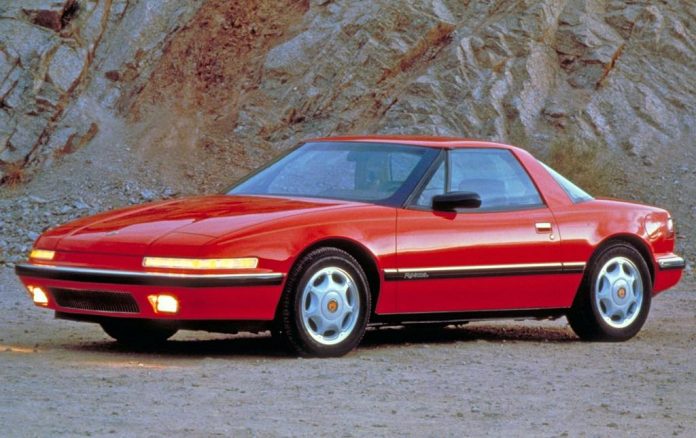










The Taurus was a family and commuter car, meant to be reliable and durable family car, and used up, the Lincoln was a serious sleeper, with the hot mustang motor and magnetic suspension, a luxury hotrod. And both had real backseats!! Style??! Ok, but not outrageous. Its Ford, y’know??
CRT screen not LCD.
I remember briefly considering one of these back in the late ’80s/early ’90s, but given the price of $30,000 I could buy a lot of other better cars for about the same or just a little more – Corvette, Nissan 300ZX Twin Turbo, Mitsubishi 3000GT, etc…. It needed to be $20,000 or less. Ended up buying the Nissan.
I drove this car back in the day when I wourked at a dealership. No manual and it drove and handled like a floppy fish. Um no. It was never good and never had a chance,
In that day you had so much else to pick from BMWs Acuras and Hondas Nissans like the really cheap SE-R and the very nice Maxima. As said never a chance,
Hi Mark,
I had a chance to drive a Reatta once – not a press car; this about ten years ago. It was like a nicer Fiero. A fun little car with more power and a nicer ride, though the Fieros I have driven handle much better (as they ought to).
Eric I remember back then you couldnt give them away. They were just the usual GM corporate committee car with no personality. I bet theyre free now.
I seriously considered one of these as a inexpensive fun commuter vehicle when they were about 10 years old, but the low numbers and parts availability made it iffy. What doomed it for me was no backseat at all. Unless it’s mid engined, virtually all cars should have some vestigial backseat. The Europeans even know this, except for ultra luxurious sport coupes, which are meant to be low production anyhow. I did have a Buick Somerset, which I drove the wheels off, and really impressed me. The Riveria was always a nicer rendition of the traditional sporty coupe by Buick, plus a backseat!!!
Hi Saxon’s!
I aspire to be a low-rent Jay Leno… with a garage full of weird cars and bikes. I’d especially like to have a ’74 Suzuki RE5 rotary… which is about as weird as a bike can get!
Hey Eric,
I know of at least one weird bike that you own.
Cheers,
Jeremy
I gave up on this article when the author said the fwd 1988 3.8L was the same as the rwd 1987 3,8l, the Fiero was a Pontiac, Chevy had more coupes than the Corvette (they had the Camaro, a Celebrity coupe and the Monte Carlo)
Hi Anon,
I said the V6 was the same – which it was, other than power output. And being mounted transversely. The Camaro, et al have two doors … and four seats. The Reatta (and Fiero and Corvette) have two doors and two seats.
The Buick Regal was front-wheel drive for 1988, and the 3.8 V-6 engine’s were not turbocharged after 1987. Buick Regal sales fell off when they went to front-wheel drive, and the ad campaigns tried to fool people into thinking the 1988 version of the Regal was the same performer as the discontinued 1987 rear-wheel drive drivetrain.
Two things:
1) “Buick only made it for not-quite three years, from January of 1988 through the spring of 1991.” — That would be a little OVER three years.
2) The Fiero was a Pontiac, not a Chevy.
In 1989, my folks were in need of replacing their 1981 VW Jetta, which was rusting out badly. My dad wanted to buy a Reatta and my mom wanted a LeSabre. They ended up with a Century T Type. They kept that car for 10 years.
Reatta – The Caddy that Zigs.
Like you said, right car… wrong label. But what killed it, like most GM products that aren’t mostly generic or well established, it never got enough time to grow and demanding results like they saw in the “good old days.” Hiding it in the back of the Cadillac brochure and giving it time to develop (and probably some untraditional marketing, like what Audi does with ski resorts), it might have had a chance. But aspirational Cadillacs of this time were the Cimarron and Catera, two yawn-inspiring forgettable vehicles that didn’t want to step on the toes of any other lines.
The Fiero was a Pontiac.
Interesting story! This was the car my father’s tubby secretary drove back in the day!
Have you considered putting the ’96 Taurus (Oval Taurus) and Lincoln Mark VIII in the book? Ford lost momentum in both of those segments thanks to the atrocious styling.